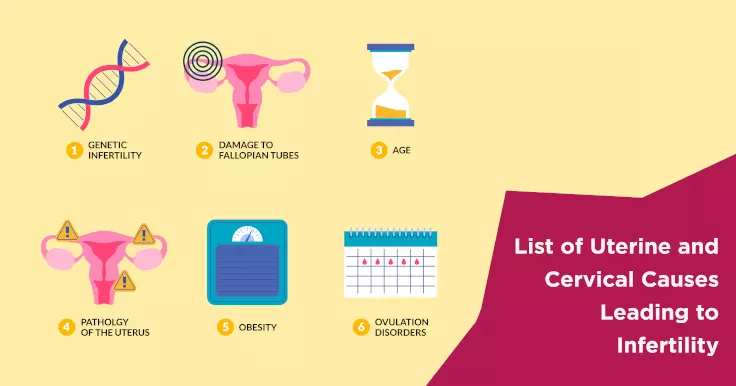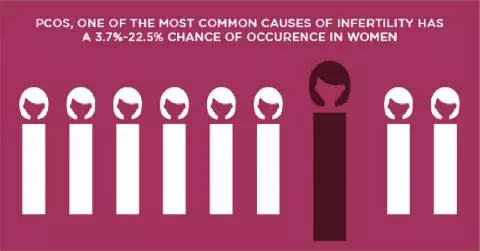Uterine and Cervical Causes of Infertility: Key Insights

Female infertility is a common condition. It is marked by the inability to conceive despite having well-timed unprotected sexual intercourse for over a year. In most cases, it can be treated and the couple can eventually have children of their own. Infertility may be caused by many factors. The most common causes of infertility are associated with the uterus and the cervix.
Uterine Causes for Infertility
An abnormality in a woman's uterus can interfere with a couple's effort to get pregnant. These abnormalities can take many different forms including the ones listed below:
Fibroids:
Fibroids are non-cancerous growths in the uterus. These growths can distort the shape of the endometrial cavity and make it difficult for a fertilised egg to be implanted in the uterus.
Asherman Syndrome:
This is a rare syndrome where scar tissue develops inside the uterus. This scarring can range from thin stretchy scar tissue to more dense bands of scar tissue. In severe cases, it can make the walls of the uterus stick to each other. Surgically removing this scar tissue can restore a woman's fertility.
Malformations:
Sometimes, the reproductive organs may not develop properly. This can happen before one is born or while she is still a fetus. Malformations of the uterus and fallopian tubes are also referred to as Mullerian anomalies. There are many types of Mullerian anomalies. These include:
- Duplication of the vagina, uterus and cervix
- Abnormal formation of the uterus
- Abnormal formation of the fallopian tubes
- Two uteri that share a single vagina and cervix
- Single uterus with a septate dividing it into two
 Infertility Counselling
Infertility Counselling Female Infertility Treatment
Female Infertility Treatment Andrology Treatment
Andrology Treatment Fertility Enhancing Surgeries - Female
Fertility Enhancing Surgeries - Female Fertility Enhancing Surgeries - Male
Fertility Enhancing Surgeries - Male Endoscopy Treatment
Endoscopy Treatment IUI Treatment
IUI Treatment IVF Treatment
IVF Treatment ICSI Treatment
ICSI Treatment Advanced IVF Solutions
Advanced IVF Solutions Embryology
Embryology Vitrification Egg, Embryo, Sperm Freezing
Vitrification Egg, Embryo, Sperm Freezing Preimplantation Genetic Testing (PGT)
Preimplantation Genetic Testing (PGT) Donation Program Embryo / Egg / Sperm
Donation Program Embryo / Egg / Sperm Self-cycleTM IVF
Self-cycleTM IVF

 Self-cycleTM IVF
Self-cycleTM IVF










